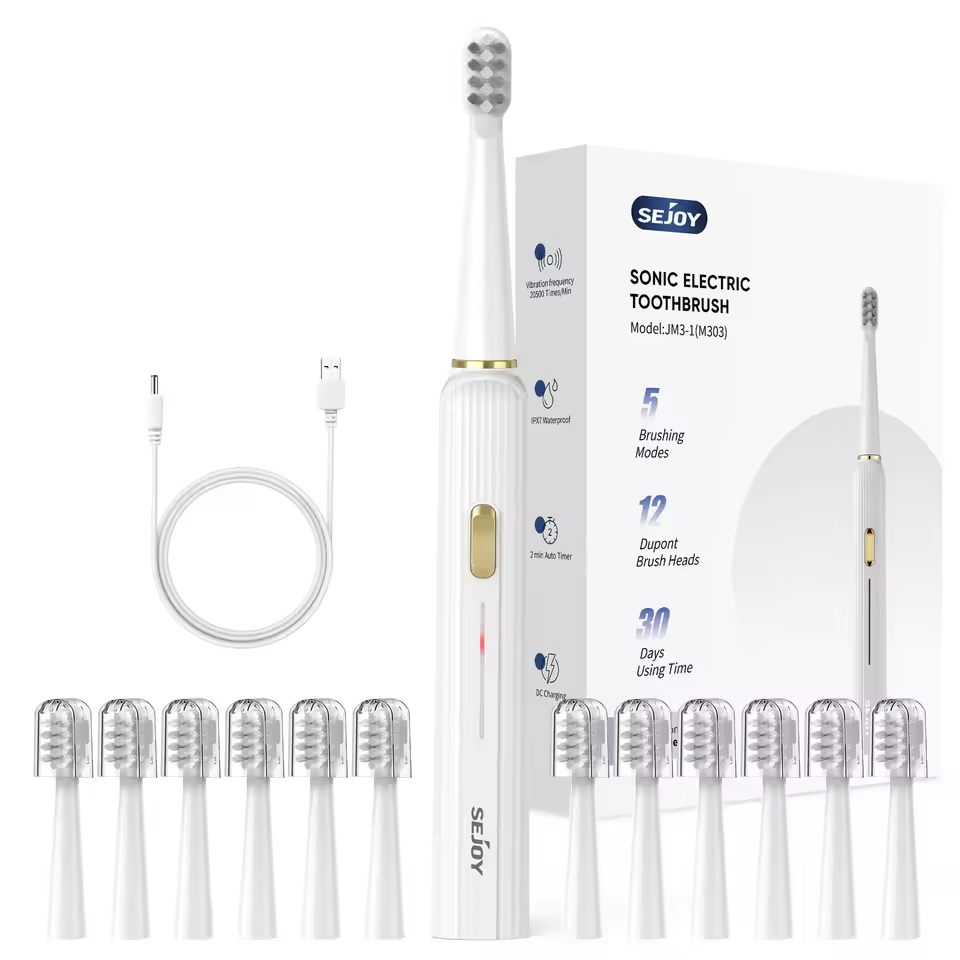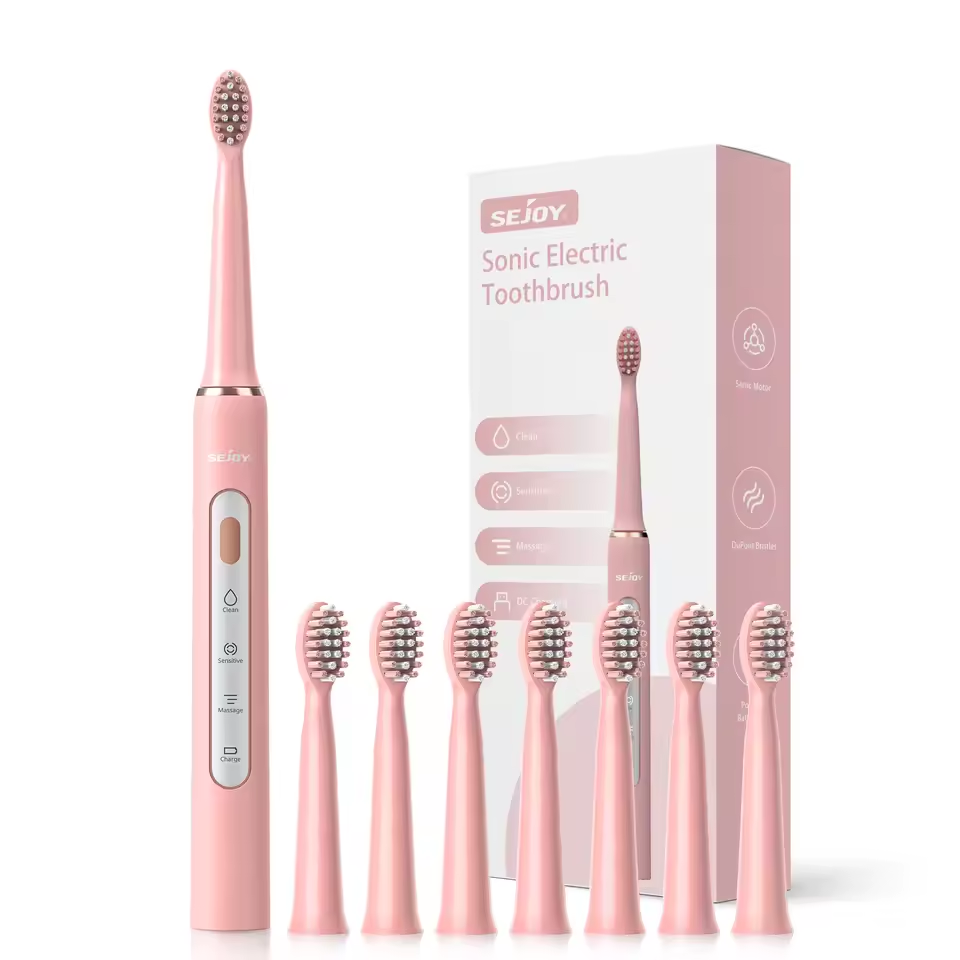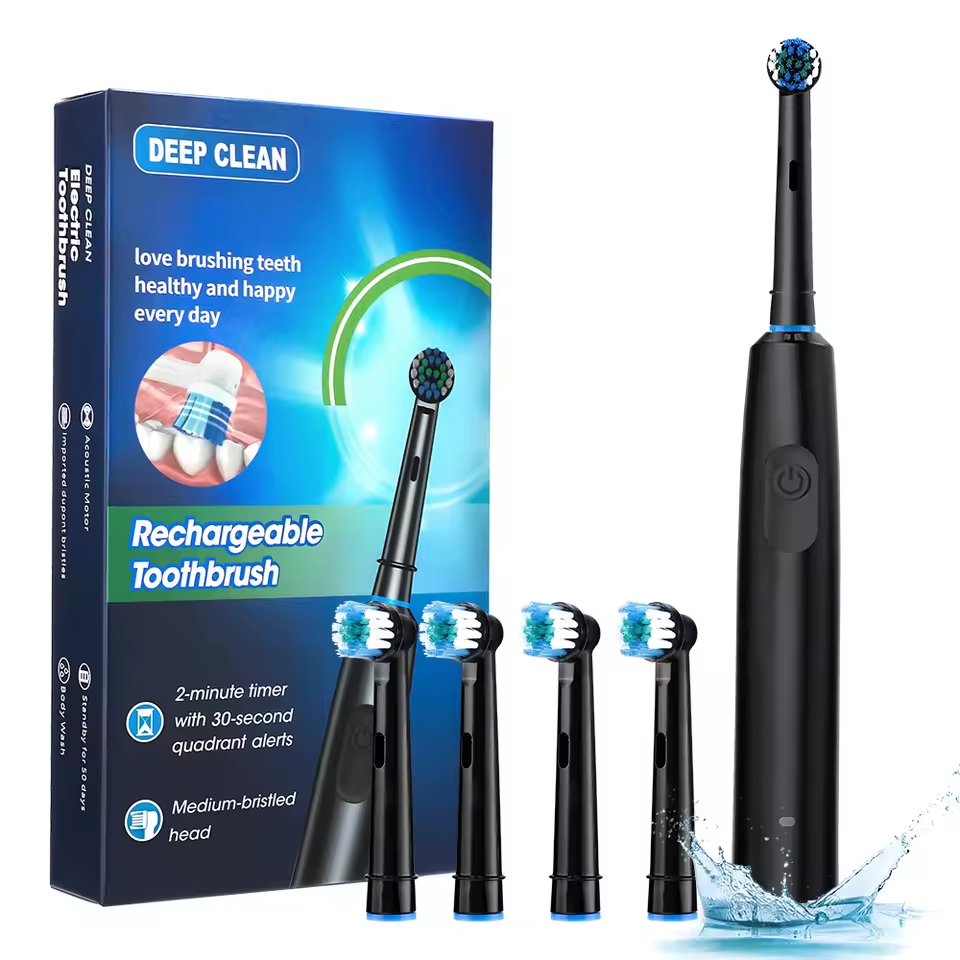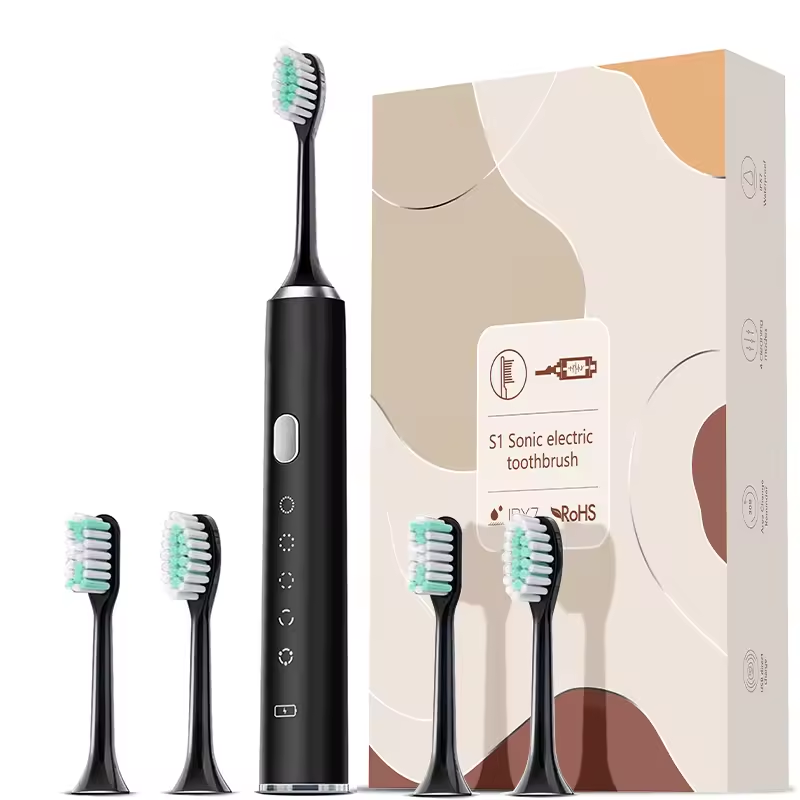Why Electric Toothbrushes Are Ideal for Braces
Brushing teeth with braces can be challenging. Electric toothbrush for Braces are designed to make this process easier and more effective. They offer advanced cleaning options to target hard-to-reach areas and maintain oral hygiene during orthodontic treatment.

Benefits of Electric Toothbrushes Over Manual Brushes
Electric toothbrushes provide superior plaque removal compared to manual brushes. Their advanced technology includes oscillation, rotation, and sonic movements that effectively clean around brackets and wires. These brushes also often have built-in timers to ensure users brush for the recommended two minutes. This feature promotes better habits and consistency in oral care.
Electric toothbrushes are also more user-friendly. Their automatic movements require less effort and are especially beneficial for children or users with limited dexterity. Additionally, some models feature specialized brush heads designed to clean around braces more efficiently.
Addressing Oral Hygiene Challenges With Braces
Braces create many hiding spots for food particles and plaque. Failing to clean these areas can lead to cavities, gum disease, or white spots on teeth. Electric toothbrushes tackle these challenges with precision.
They are especially effective at reaching tight spaces, reducing the risk of plaque buildup. Many models include pressure sensors to prevent brushing too hard, which could damage the braces or irritate gums. Customized cleaning modes for sensitive teeth are also a significant advantage for those wearing braces.
By using an electric toothbrush, individuals can overcome the daily challenges of maintaining clean teeth with braces. This ensures healthy teeth and gums throughout their orthodontic journey.
Key Features to Look For in an Electric Toothbrush for Braces
Choosing the right electric toothbrush for braces involves understanding key features. Not all models are equally effective for orthodontic care. Here are the essential features to consider:
Bristle Type and Design
Opt for soft bristles that can clean gently around brackets and wires. Brushes with a compact head are ideal. They allow for better access to tight spaces. Angled or orthodontic-specific brush heads improve precision.
Cleaning Modes for Superior Plaque Removal
Electric toothbrushes often offer multiple cleaning modes. Look for modes designed for plaque control or sensitive teeth. These settings ensure thorough cleaning without harming gums or braces. Such modes are especially helpful for users adjusting to braces.
Pressure Sensors for Safe Brushing
Brushing too hard can damage braces and irritate gums. Many electric toothbrushes have built-in pressure sensors. These sensors alert users when they are applying excessive force. They help maintain a balance between effective cleaning and safety.
Battery Life and Charging Convenience
Long battery life is crucial for consistent use. Rechargeable toothbrushes with durable batteries allow for uninterrupted cleaning. Portable charging options or USB compatibility enhance convenience, especially for traveling users.
When selecting an electric toothbrush for braces, prioritize these features. They ensure effective cleaning and protect your orthodontic appliances.
Best Types of Electric Toothbrushes for Braces
When choosing an electric toothbrush for braces, understanding the available technologies is essential. Different types of toothbrushes cater to specific needs, ensuring effective cleaning around braces and wires. Here are the most suitable options:
Oscillating and Rotating Heads
Electric toothbrushes with oscillating and rotating heads provide thorough cleaning around braces. These heads spin and rotate to remove plaque from tight areas efficiently. The movements are superb for cleaning around brackets and wires. Their precision minimizes the risk of plaque buildup. This type is great for achieving cleaner teeth with minimal effort.
Sonic Technology Solutions
Sonic toothbrushes clean teeth using high-speed vibrations. These vibrations create fluid dynamics, which reach hard-to-access spots. Sonic technology is ideal for braces because it removes debris from small gaps effectively. This option is gentle on gums and suitable for sensitive teeth. Additionally, the rapid vibrations help in breaking down stubborn plaque.
Specialized Brush Heads for Orthodontic Appliances
Some electric toothbrushes offer special brush heads for braces. These heads are designed with smaller and angled bristles. They allow users to clean around brackets and wires effectively without harming the appliances. Orthodontic-specific brush heads enhance plaque removal and improve oral hygiene. Choosing these brush heads ensures a better cleaning experience for braces wearers.
Selecting the best type of electric toothbrush ensures optimal care for your teeth and braces. Oscillating heads, sonic technology, and specialized brush heads are all excellent options.
Top Electric Toothbrush Models for Braces in 2023
Not all electric toothbrushes are equal when it comes to braces. Here are 2023’s top picks.
Highly Recommended Brands
- Oral-B:
- Offers oscillating and rotating technology for effective cleaning around braces.
- Specialized orthodontic brush heads ensure precise cleaning without damaging brackets.
- Models like the Oral-B iO 9 feature pressure sensors and multiple cleaning modes.
- Philips Sonicare:
- Utilizes sonic vibrations for deep cleaning in tight spaces.
- Gentle on gums and ideal for users with sensitive teeth.
- Popular models include Philips Sonicare ProtectiveClean 6100, equipped with customization options.
- Waterpik Sonic-Fusion:
- Combines a toothbrush and water flosser in one for a comprehensive cleaning.
- Effective for removing debris stuck around braces and wires.
- A great choice for users who need extra attention to hard-to-reach areas.
Comparisons of Popular Models
- Oral-B iO Series vs Philips Sonicare DiamondClean:
- Oral-B iO has oscillating heads and AI-guided cleaning to target each tooth.
- Philips Sonicare offers sonic vibrations that clean deeply and gently around braces.
- Both are strong options, but Sonicare may suit sensitive gums better.
- Waterpik Sonic-Fusion vs Standard Sonicare Brushes:
- Waterpik includes flossing capability for a dual-action clean.
- Standard Sonicare models are simpler and focus solely on brushing.
- Waterpik is best for users seeking all-in-one functionality.
- Budget-Friendly Options:
- Oral-B Pro 1000: Affordable with reliable oscillating technology suitable for braces wearers.
- Philips Sonicare 4100: Offers essential features like a timer and gentle sonic cleaning at a lower price.
Selecting the right electric toothbrush for braces depends on your preferences and needs. Consider top brands and compare features before choosing one.
Proper Brushing Techniques With Braces and Electric Toothbrushes
Using an electric toothbrush with braces requires proper technique. This ensures effective cleaning and protects your dental health. Follow these tips for best results.
Step-by-Step Brushing Guide
- Rinse Your Mouth and Brush Head: Start by rinsing to remove loose food particles.
- Add Toothpaste: Use a fluoride toothpaste. Apply a small amount to the brush head.
- Position the Brush Correctly: Hold the brush at a 45-degree angle to your teeth and braces.
- Turn On the Toothbrush: Let the toothbrush do the work. Avoid vigorous manual movements.
- Clean Each Tooth Individually: Start from the front teeth. Spend 3-5 seconds on each tooth.
- Focus on Brackets and Wires: Angle the brush to clean around braces. Ensure all surfaces are covered.
- Brush the Gumline: Clean gently along the base of the gums to prevent plaque buildup.
- Brush Chewing Surfaces: Don’t forget the tops of your teeth where chewing occurs.
- Rinse and Inspect: Rinse thoroughly and check for any remaining debris.
Consistency is key. Repeat this routine twice daily for the best results.
Avoiding Common Mistakes
- Skipping Hard-to-Reach Areas: Spend extra time on tight gaps around braces.
- Brushing Too Hard: Use light pressure to avoid damaging braces or irritating gums.
- Rushing the Process: Take your time to brush effectively without missing spots.
- Using the Wrong Brush Head: Opt for orthodontic-specific heads for cleaning around braces.
- Not Replacing Worn-Out Brush Heads: Change heads every three months or sooner if frayed.
- Skipping Regular Brushing: Inconsistent habits lead to plaque buildup and gum issues.
By avoiding these mistakes and following proper techniques, you can protect your braces and maintain excellent oral hygiene.
Maintaining Oral Health While Wearing Braces
Wearing braces requires extra care for maintaining proper oral hygiene. Braces can create spaces where food and plaque accumulate. Using the right tools and regular checkups can make a big difference in dental health.
Complementary Tools: Flossers and Interdental Brushes
- Flossers for Precision Cleaning: Use flossers designed for braces. They help clean between teeth and wires effectively. Regular flossing prevents cavities and plaque buildup.
- Interdental Brushes for Tight Spaces: These brushes are perfect for cleaning around brackets and wires. They reach areas that toothbrushes miss. Interdental brushes reduce the risk of gum disease and tooth decay.
- Mouthwash for Extra Protection: Choose an antibacterial mouthwash to remove leftover bacteria and strengthen your enamel. Using mouthwash complements flossing and brushing routines.
Adding these tools to your oral hygiene routine provides thorough cleaning with braces.
Visiting Your Orthodontist Regularly
- Schedule Regular Appointments: Orthodontic visits are essential for brace adjustments and health evaluations. Stick to the recommended schedule.
- Professional Cleaning: Orthodontists clean areas that are hard to reach with regular brushing. These cleanings prevent long-term damage.
- Check Alignment and Tightness: Regular visits ensure your braces are working properly and not causing discomfort. Adjustments improve treatment effectiveness.
- Early Detection of Issues: Orthodontists can identify problems like gum inflammation or tooth decay early. Timely treatment prevents worsening conditions.
By using complementary tools and visiting your orthodontist, you can maintain excellent oral health with braces. These practices ensure clean teeth, strong gums, and successful orthodontic results.
Frequently Asked Questions About Electric Toothbrushes for Braces
Are Electric Toothbrushes Safe for Braces?
Yes, electric toothbrushes are safe for braces when used correctly. They clean brackets and wires effectively. Many electric toothbrushes come with pressure sensors to protect braces and gums. Specialized brush heads ensure gentle cleaning around orthodontic appliances. Always choose a toothbrush designed for braces to avoid damaging them.
How Often Should You Replace the Brush Heads?
Replace brush heads every three months or sooner if bristles fray. Worn-out bristles reduce cleaning effectiveness. Regular replacement ensures optimal plaque removal and protects braces from inadequate brushing. Orthodontic-specific heads may wear faster and need earlier replacement. Clean your brush head after each use to prolong its lifespan.
Can Electric Toothbrushes Prevent Tooth Stains?
Yes, electric toothbrushes help prevent stains by removing plaque and food particles effectively. They clean hard-to-reach areas around braces, preventing stain buildup. Brushes with whitening cleaning modes can enhance stain removal. Combine electric brushing with proper oral hygiene for long-lasting prevention of discoloration. Regular use ensures cleaner braces and sparkling teeth.

